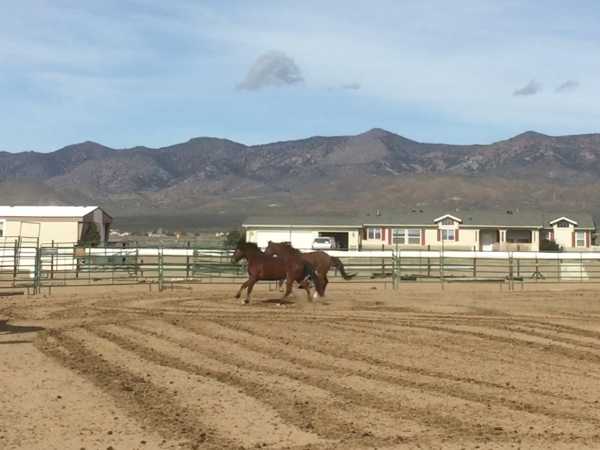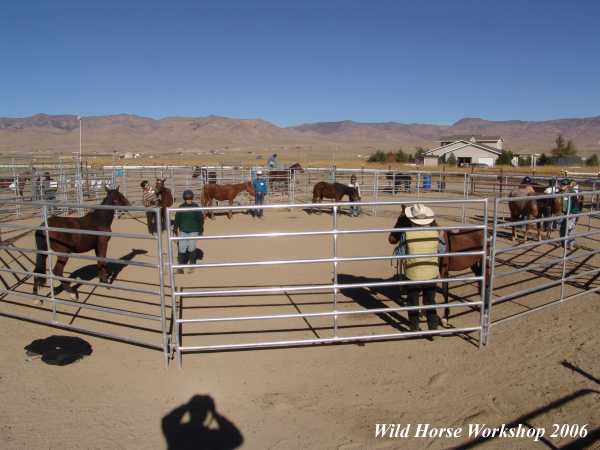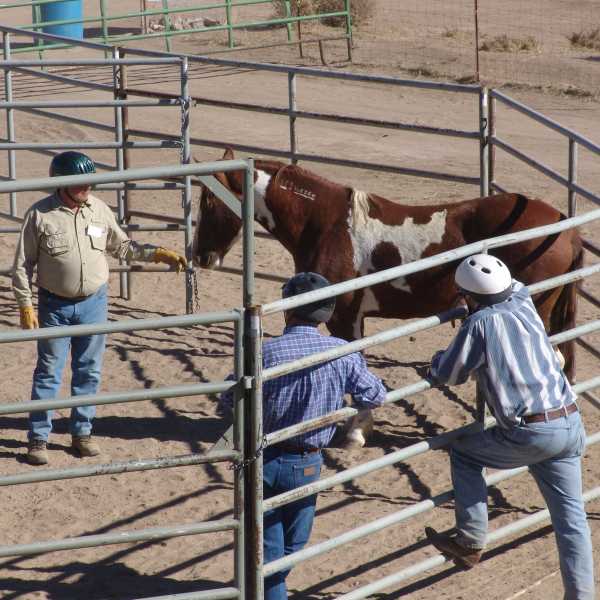|
This page is a continuation from Part One.
Perception: The state of being or process of becoming aware of something through the senses.
Horses are prey animals and therefore they perceive their environment and they process what they perceive far differently than predators, especially us humans. We as humans can observe, consider, deliberate, conceptualize and formulate ideas and strategies because we are at the top of the food chain. We have the luxury of time to make decisions and our brains have evolved to serve us best under these conditions.
Horses' brains have evolved to reduce their chances of being eaten by natural predators. In the wild they don't have time to reason through situations that concern them. They survive by avoiding stressful situations and by following habit-formed escape / defense rituals commonly referred to as "flight or fight" behavior. Therefore horses make very poor analysts, but they have incredible memories. These are characteristics that can be both problematic and advantageous, depending on how we as humans relate to horse behavior in our training and handling approaches.
How long can horses remember things? Possibly pretty much forever, and that's a sobering thought. They are hard wired so that things that they perceive will trigger a specific recall. We've seen this phenomenon where mustangs that had been separated for upwards to 15 years immediately recognized each other when reunited.
Mustangs "Harry" and "Ranger" went through the NNCC Inmate Saddle Horse Training Program together.
They hadn't seen each other for over 11 years. When they found themselves turned out in the same arena, they
rubbed on each other and frolicked and played like colts. (Their behavior prompted us to look up their records.)

Understanding how a horse is "wired" can help us understand why horses respond the way that they do to their environments, social activities, stress, danger, training, and routine activities such as riding and driving.
In a nutshell, the way horses process information through their neuropathways is greatly driven by their experiences. When stressed or confronted with danger, the response "messages" that go through the horse's neuropathways nearly always follow a direct line to heightened awareness, then to flight or fight. For years we have described this response as the horse taking an on-ramp directly to the "Flight or Fight Freeway." By constructively impacting the horse's experiences, we can observe the horse responding differently, as we have described as motivating the horse to take a "Winding Country Road" that has intersecting "choices" that can be influenced by the handler / rider's cues and direction.
What we didn't realize at the time was how much horses' neurophysiology actually resembled this illustration. Neurological carriers of information known as dendrites can either develop as straight "on-ramp" pathways for survival behavior, or they can have multiple "decision branches" that are produced as a result of the horses' experiences and training.
Capitalizing on programmed behavior. BLM wild horses shortly after being haltered for the first time.
Letting the horses process in a "herd" environment that includes their human handlers.

We've understood for years that the lick and chew response (referred to by some as "digesting a thought") did not necessarily indicate that a horse has learned something. Sometimes it is an "I got it" display. Other times it's simply the horse going from a higher level of stress to a lower level of stress. What we are now learning is that there are chemical responses taking place inside the horses' brains that produce these displays.
Horses get a positive chemical feedback when they escape danger since that behavior must be reinforced for the horse to survive in the wild. Horses also get a positive chemical feedback when they solve a problem since that behavior must be reinforced for the horse to continue to learn about its environment. This chemical feedback produces a sense of comfort. It's up to us as trainer / handlers / riders to understand this process and make the most of it.
Scenario 1: A "trainer" is relentlessly pursuing a horse in a round pen. When the trainer finally stops and the horse licks and chews, has the horse learned something or is it merely relieved that it finally escaped the "pursuit" of the human? If the positive feedback is as a result of escape behavior, what is the horse actually being taught?
Scenario 2: A trainer is asking a horse to investigate an unfamiliar tarp on the ground. The horse may start out being shy, approaching and retreating, then pawing the tarp, then becoming more relaxed as the horse discovers that the tarp is not a threat. In this case is the licking and chewing associated with a flight response or is it recognition that this new object in the horse's environment is not a threat?
Where the trainer in Scenario 2 gets some real leverage is in developing an "it's OK" cue that the horse learns to recognize so that the horse responds to potentially unsettling objects or conditions by going down "Curiosity Lane" rather than the "Flight Freeway." Then to cement this desired behavior, the competent trainer next gives the horse a little time to actually process and "file" what it just learned before moving on.

Press "Back" to return to the page which brought you here
KBR Horse Training Information, © 2015 Lamm's Kickin' Back
Ranch and Willis & Sharon Lamm. All rights reserved. Duplication of any of this material for
commercial use is prohibited without express written permission. This prohibition is
not intended to extend to personal non-commercial use, including sharing with others for
safety and learning purposes, provided this copyright notice is attached.
Email us to submit comments or request reproduction
permission.
| 



